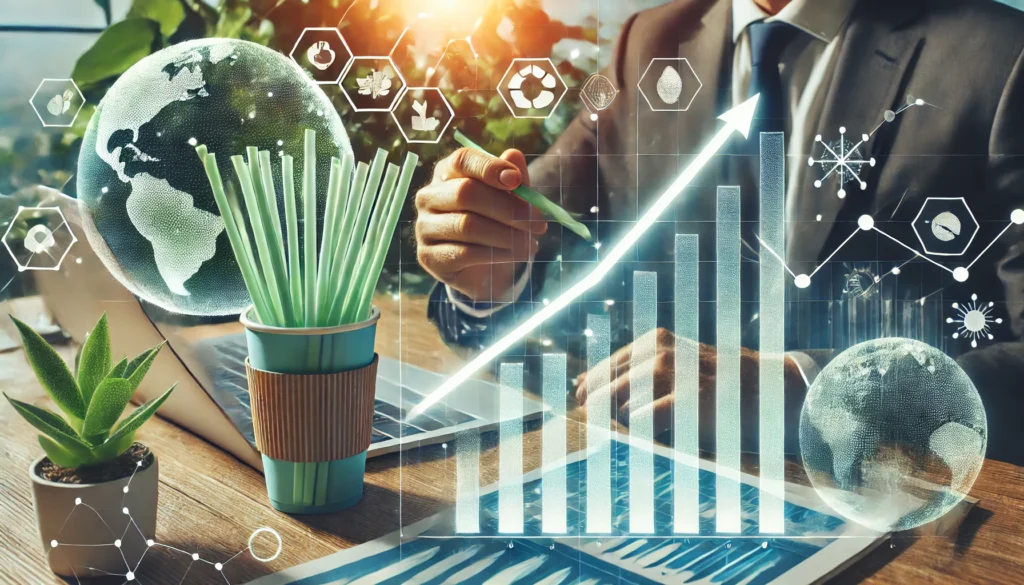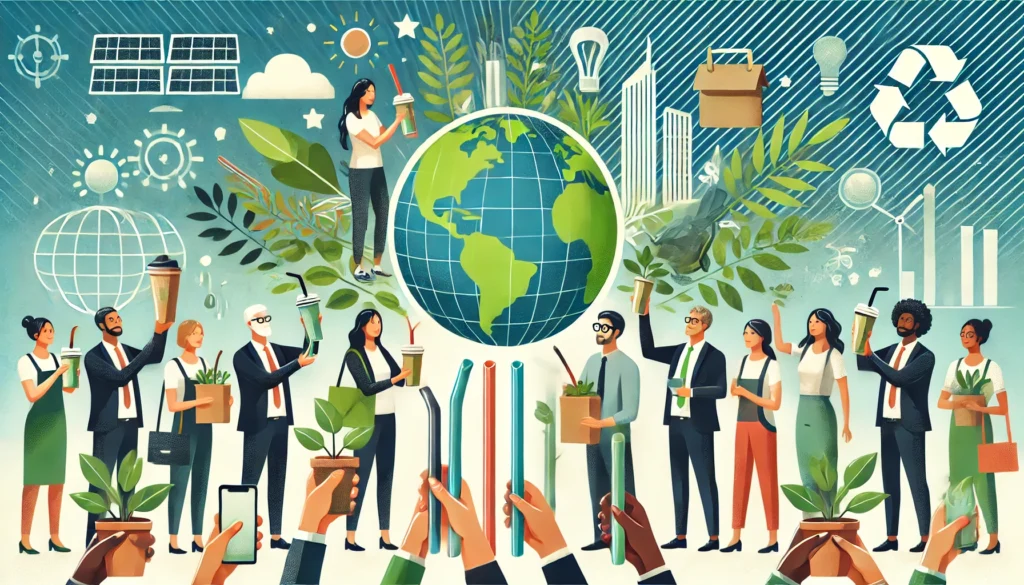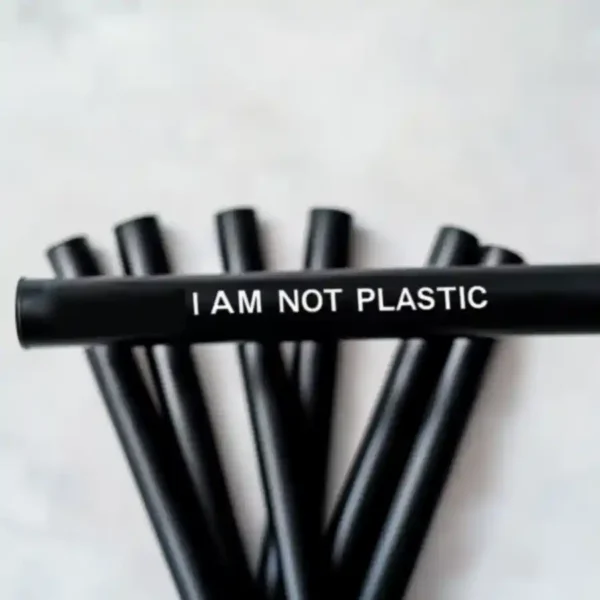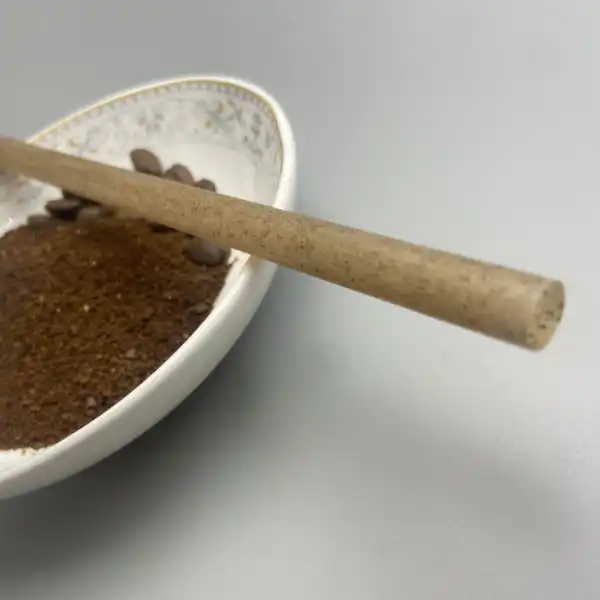Introduction: The Compelling Business Case for Sustainable Alternatives
In today’s hyper-aware consumer landscape, environmental consciousness isn’t just a trend—it’s a powerful force shaping purchasing decisions and brand loyalty. A staggering 73% of millennials are willing to pay a premium for eco-friendly products, according to the Nielsen Global Corporate Sustainability Report. This shift in consumer behavior presents a golden opportunity for businesses to align their practices with these values, and the transition to eco-friendly straws serves as a perfect entry point.
But let’s be clear: this isn’t just about jumping on a bandwagon. It’s about future-proofing your business, enhancing your brand’s reputation, and contributing to a global movement that’s reshaping our relationship with the planet. As someone who’s consulted with numerous businesses on sustainability initiatives, I can attest to the transformative power of seemingly small changes like switching to eco-friendly straws.
The Environmental and Business Impact: A Dual Perspective
Environmental Impact: The Stark Reality
The numbers are sobering. Every year, 8.3 billion plastic straws pollute our world’s beaches, according to National Geographic. These seemingly innocuous tubes can take up to 200 years to decompose, outliving several human generations. In contrast, eco-friendly alternatives can return to the earth in as little as 3-6 months under proper conditions.
I once visited a sea turtle rehabilitation center in Costa Rica, where I saw firsthand the devastating effects of plastic pollution on marine life. The image of a turtle with a plastic straw lodged in its nostril is one I’ll never forget—and it’s a powerful reminder of why this change matters.
Business Benefits: The Strategic Advantage
- Cost Efficiency: While the initial investment might raise eyebrows, the long-term savings are substantial:
- Tax incentives for sustainable practices can offset initial costs
- Reduced waste management expenses as eco-friendly alternatives often require less complex disposal processes
- Enhanced operational efficiency through streamlined supply chains focused on sustainable products
- Market Positioning: The numbers speak volumes:
- 66% of consumers are willing to pay more for sustainable brands (Nielsen)
- Brands demonstrating environmental responsibility are 48% more likely to build consumer trust (Accenture Strategy)
In my experience working with a mid-sized coffee chain, their switch to biodegradable straws led to a 15% increase in customer loyalty and a 7% boost in new customer acquisition within the first year.

Implementation Strategy: A Roadmap to Success
1. Assessment Phase
- Conduct a thorough audit of current straw usage and associated costs
- Evaluate available eco-friendly alternatives, considering factors like durability, customer experience, and environmental impact
- Research local regulations to ensure compliance and potentially leverage incentives
2. Selection Process
Consider these sustainable options, each with its unique advantages:
- PLA (Corn-based) straws: Ideal for cold beverages, mimicking the feel of plastic
- Paper straws: Widely available and cost-effective, though with shorter use time
- Bamboo straws: Durable and reusable, offering a premium, natural feel
- Metal straws: Long-lasting and perfect for establishments aiming for a zero-waste approach
Pro tip: Don’t just choose based on cost. Consider your brand identity and customer preferences. A high-end cocktail bar might opt for sleek metal straws, while a family-friendly diner might prefer the familiarity of paper options.
3. Pilot Program
- Implement a controlled test in select locations or departments
- Gather comprehensive customer feedback through surveys and direct interactions
- Monitor operational impacts, including staff training needs and storage requirements
Measuring Success: Beyond the Numbers
Implement a holistic monitoring system that captures both quantitative and qualitative data:
1. Quantitative Metrics
- Track reduction in plastic waste (kg/month)
- Conduct a detailed cost comparison with traditional straws over time
- Monitor customer satisfaction scores specifically related to the new straws
- Analyze sales data to identify any correlation with the sustainability initiative
2. Qualitative Assessment
- Perform in-depth customer feedback analysis, including sentiment in comments
- Monitor social media sentiment and engagement around your sustainability efforts
- Measure employee engagement levels—often overlooked but crucial for initiative success
- Commission brand perception studies to gauge the impact on overall brand image
Case Studies: Learning from the Leaders
Costa Coffee UK: A Lesson in Scale
- Replaced a staggering 175 million plastic straws annually with paper alternatives
- Achieved a 93% customer approval rate, demonstrating that consumers are ready for change
- Reported a 12% increase in eco-conscious customer segments, opening new market opportunities
Marriott International: Global Impact, Local Implementation
- Eliminated 1 billion plastic straws globally, showcasing the power of corporate commitment
- Saved $4.1 million annually through various sustainable initiatives, proving the financial viability of eco-friendly choices
- Enhanced brand value by 23% among millennial travelers, a crucial demographic for the hospitality industry
These cases underscore a crucial point: sustainability initiatives, when executed thoughtfully, can yield significant business benefits while contributing to environmental conservation.
Best Practices for Customer Communication: Transparency is Key
1. Transparent Messaging
- Implement clear, engaging signage explaining the initiative and its impact
- Invest in comprehensive staff training to ensure they can articulate the benefits convincingly
- Provide regular updates on the environmental impact achieved, making the change tangible for customers
2. Educational Components
- Create eye-catching in-store displays showing decomposition timelines of different straw types
- Launch social media campaigns that highlight the environmental benefits in relatable terms
- Organize customer workshops on sustainability, fostering a community around your brand’s values
3. Feedback Mechanisms
- Implement user-friendly digital surveys to gather ongoing feedback
- Actively monitor and engage with social media mentions and comments
- Establish direct customer feedback channels, showing you value their input
Looking Ahead: Future Trends in Sustainable Practices
The sustainable straw market is on a trajectory for explosive growth, with a projected CAGR of 23.7% through 2026 (Grand View Research). This growth is driven by:
- Increasingly stringent regulations on single-use plastics across global markets
- Rising consumer awareness and demand for sustainable options
- Rapid technological advancements in sustainable materials, promising even better alternatives in the near future
As someone deeply embedded in the sustainability sector, I foresee a future where eco-friendly options are not just alternatives but the norm. Businesses that adapt early will find themselves at a significant advantage.
Conclusion: A Strategic Imperative
Integrating eco-friendly straws into your sustainability strategy is more than an environmental gesture—it’s a strategic business decision with far-reaching implications. It’s an opportunity to drive growth, enhance brand value, and contribute to a global movement towards sustainability.
By following a structured implementation approach, maintaining transparent communication with stakeholders, and continuously adapting to feedback and new innovations, businesses can successfully navigate this transition. The result? A stronger, more resilient business that not only meets the expectations of today’s consumers but also helps shape a more sustainable future for all.
Remember, in the words of anthropologist Margaret Mead, “Never doubt that a small group of thoughtful, committed citizens can change the world; indeed, it’s the only thing that ever has.” Your business can be part of that change, one straw at a time.







